Designing – II
My Design Process – Part II
Swatch (if required).
Yes, sure, you have heard it before: Swatching is a necessary prerequisite for knitting and designing. That said, I have to admit that for my shawlette designs, I rarely swatch at this point, because I usually knit Mini-Versions later in the process. Also, gauge is rarely relevant when making shawls or shawlettes. However, when I design things that should fit a certain part of the body (like socks, hats, mittens), knowing gauge is essential, and I will do the necessary swatches. When working with certain yarns that I have used a million times before (Wollmeise Pure!) I will just take any finished project and measure my gauge on that. But with a new yarn and especially when designing garments, you will need to make a sufficiently large swatch that you can count the stitches on to plug them in your calculations in the next step.
Calculate.
If a new project consists of several parts (like my modular blanket) some calculations will be necessary. Mainly to get an idea about how much yarn will be used for the parts, how big they are going to turn out and how everything will fit together. With “Angles” all I needed was Pythagoras’ Theorem and some simple equation solving. But when designing a sweater, you will need to make detailed calculations to figure out the measurements and sizes using a spreadsheet (e. g. Excel, Numbers). If you plan on publishing a pattern, calculating all stitch numbers for all sizes you intend to offer at this point, because it gets more difficult later on. I am really no expert on garment design and still learning, so I cannot give you any useful advice here. But there are several good books that will teach you how to do the calculations for garments:
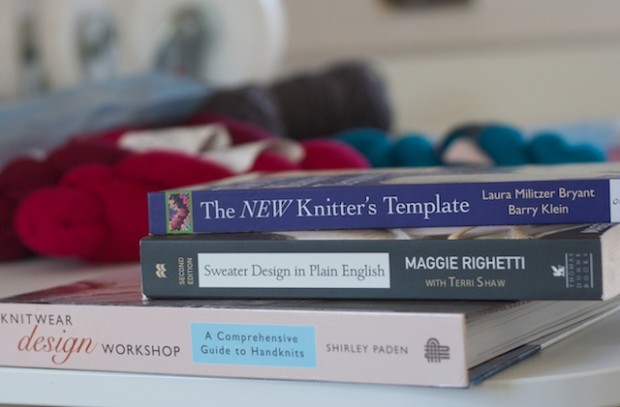
“Knitwear Design Workshop” by Shirley Paden,
“Sweater Design in Plain English” by Maggie Righetti,
“The new Knitter’s Template” by Laura Militzer Bryant.
Knit (a bit).
When I want to knit a new shape or a special edging (like the loops in Miss Winkle), I will knit a miniature version of my new Design first. I need to find out whether my idea works, whether my calculations are correct and if everything looks the way I expected. Unfortunately stitches are not square, so there is always an element of surprise to the process. And it’s so much better to frog a mini-version of my design than an entire shawlette or a huge bedspread. For the Mini-Version, I often use some yarn leftovers, not necessarily the one I am planning to use in the actual design. While I knit, I make adjustments to the notes in my sketches. The picture above shows my mini-version of “Angles”.
Choose Yarn and Colors.
When I already know which kind of yarn I want to use, I now need to decide on the colorway. As I am usually wearing my prototypes on the pictures, I tend to pick colors that look good on me (pink!) – I will feel more confident during the shoot and tend to look more relaxed on the pictures. With Angles, I had to find the best combination of colors. I had one skein of the pink and seven skeins of the beige colorway of Artesano Aran in my stash, so I just went to the yarn store and picked some colors that looked good with those. The yarn is thick and soft and seemed perfect for a cozy blanket. I usually do not pay attention to availability of colors and the like, but if you are designing for a magazine or an internet publication, make sure you talk to the editor about what yarns would be okay to use. In order to arrange colors, I used my beautiful case of crayons and made lots of colored sketches until I found out which one I liked best.
Coming up in Part III: Prototype knitting, Photoshoot and Pattern Writing.

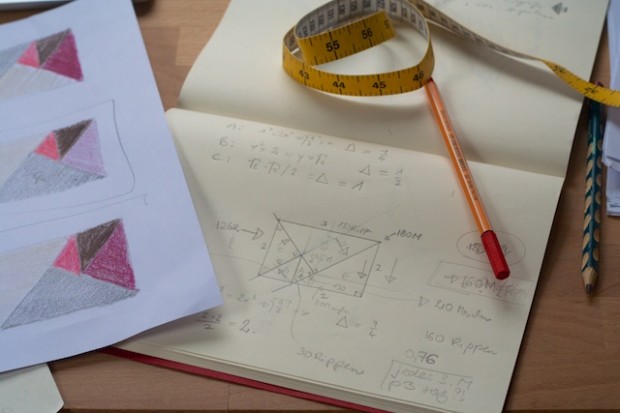
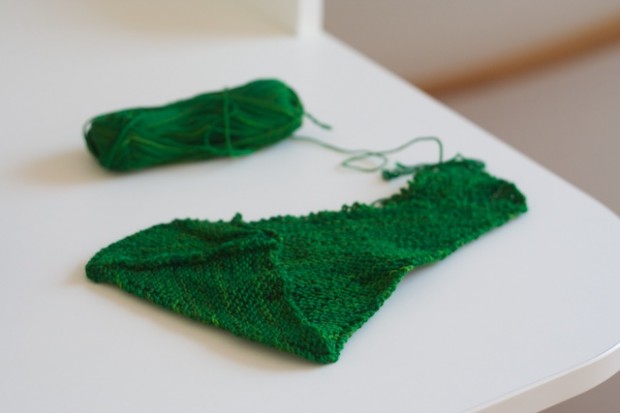
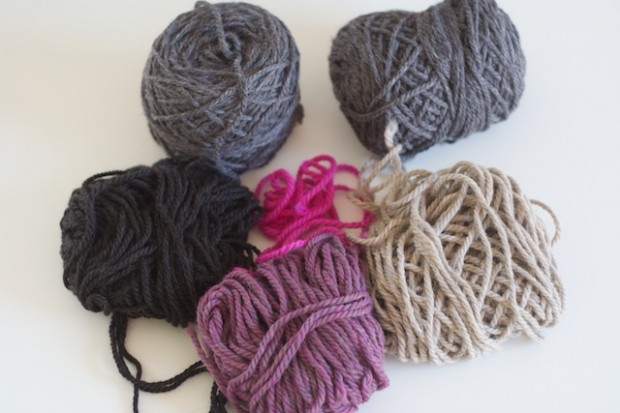
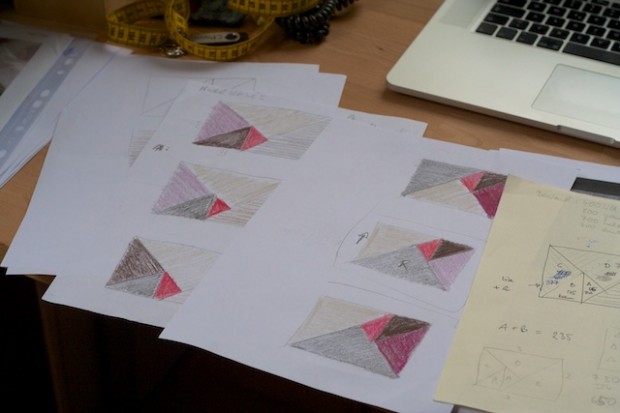
Designen ist zwar nichts für mich, ich finde deine Miniserie darüber aber total interessant und zeigt, wieviel Arbeit und Herzblut hinter jeder deiner Anleitungen steckt! GlG, Martina
Ich finde die Design-Serie richtig spannend und toll. Ich habe mich schon immer gefragt, wie man zu den Ideen gelangt und vor allem, wie man dann die Idee zu einem Strickstück umfunktioniert. Ich möchte einfach mehr darüber erfahren. :-)
Lieben Gruß!